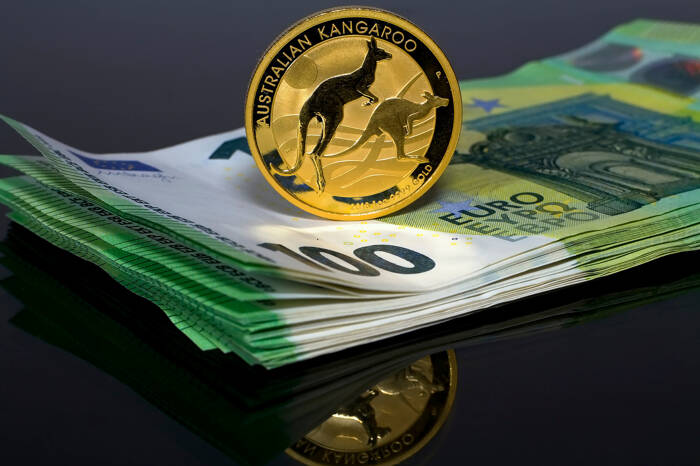Earlier in the Day During the Day During the Day During the Day During
The economic calendar had a rather busy start to the day this morning. In the early hours, the Japanese Yen, New Zealand Dollar, and Australian Dollar were all in play, with Chinese data also in the spotlight.
This morning, the Japanese Yen Tankan survey figures for the second quarter were in focus.
The All-Big Industry CAPEX increased by 9.6% in the second quarter, following a 3% increase in the first. Economists had predicted a rise of 5.2 percent.
The Big Manufacturing Outlook Index increased from 4 to 13, compared to a predicted increase of 17 points.
The Large Manufacturers Index, which rose from 5 to 14, also had a significant gain. Economists predicted a 15 percent increase.
Large Non-Manufacturers witnessed a relatively modest gain from -1 to 3, compared to a predicted growth of 10 percent.
The completed manufacturing PMI estimates for June had a modest impact on the Yen, as markets were focused on the Tankan survey results.
The Manufacturing PMI declined from 53.0 to 52.4 in June, up from a preliminary 51.5.
When the numbers were released, the Japanese yen changed from JPY111.132 to JPY111.135. The Japanese yen was up 0.05 percent against the US dollar at JPY111.060 at the time of writing.
For the New Zealand Dollar, building consents declined by 2.8 percent in May, somewhat offsetting a 5.1 percent increase in April.
Following the announcement of the numbers, the New Zealand dollar fell from $0.69919 to $0.69918. The New Zealand Dollar was up 0.06 percent to $0.6987 at the time of writing.
The Australian Dollar
Ahead of trade statistics later in the morning, the industrial sector was also in the spotlight.
The AIG Manufacturing Index increased from 61.8 to a new series high of 63.2 in June.
All seven activity indices increased in June, according to the June Survey.
Food and beverages, machinery and equipment, construction materials, and chemicals all hit new highs.
Strong demand from the construction and agricultural industries, stronger exports, local consumers seeking local suppliers, cheap financing rates, and end-of-financial-year sales were all cited as reasons for the increase.
Following the release of the figures that preceding the trade data, the Australian dollar moved from $0.75003 to $0.74996.
Australia’s trade surplus increased from A$8.028 billion to A$9.681 billion in May. Exports increased by 6% after increasing by 3.3 percent in April, while imports increased by 3%, reversing a 2.7 percent drop in April.
Following the release of the numbers, the Australian dollar rose from $0.74854 to $0.74891. The Australian Dollar was down 0.12% to $0.7489 at the time of writing.
China has left the country.
The Caixin Manufacturing PMI declined from 52.0 to 51.3 in June, a three-month low. Economists predicted a drop to 51.9 percent.
A lower growth in output dragged on the headline result, according to the June Survey, with production rising at the slowest rate since Mar-2020.
Total new business grew at a slower pace as well, with the rate of rise being the slowest in three months.
Despite this, businesses continued to hire, with the hiring rate being the second highest since January 2013.
Backlogs grew for the fourth month in a row, while the rate of buildup was slow.
In June, inflationary pressures subsided, with input price inflation slowing to a seven-month low.
As a result, manufacturers’ prices increased at the slowest rate since February.
Manufacturers’ optimism remained stable, with the level of optimism remaining constant from May’s four-month low.
Following the release of the numbers, the Australian dollar rose from $0.74891 to $0.74896.
The Day to Come
In terms of the Euro
On the economic data front, it’s going to be a busy day. Italy and Spain are expected to release manufacturing PMI data. France, Germany, and the Eurozone are also expected to release finalized manufacturing PMIs.
Expect Italy and the Eurozone’s PMIs to have the most impact on the EUR, barring any changes to preliminary readings.
Later in the day, the Eurozone unemployment figures will be of significance.
The EUR was down 0.07 percent to $1.1850 at the time of writing.
Pound for Pound
On the economic calendar, today is a rather calm day. The finalized Manufacturing PMI for June is expected to be released early in the day. With little else on the horizon for the markets to contemplate, any modifications to economic statistics are likely to have an impact.
COVID-19 will continue to have an impact outside of the economic calendar.
The Pound was down 0.12 percent at $1.3815 at the time of writing.
Across the Pond It’s going to be a hectic day.
Later in the day, the ISM Manufacturing PMI and jobless claims will be the main topics of discussion.
The primary driver is likely to be the number of people who have filed for unemployment benefits. Dollar demand should be boosted if the dollar falls below 350k.
The Dollar Spot Index was down 0.03 percent to 92.411 at the time of writing.
The Loonie is a currency used in Canada.
On the economic data front, it’s going to be a rather quiet day. There are no material stats available to guide the Loonie.
Due to a paucity of data, the Loonie will be at the mercy of market risk sentiment on any given day.
The Loonie was trading at C$1.2406 against the US Dollar at the time of writing, down 0.06 percent.
Check out our economic calendar for a complete list of today’s economic happenings./n





